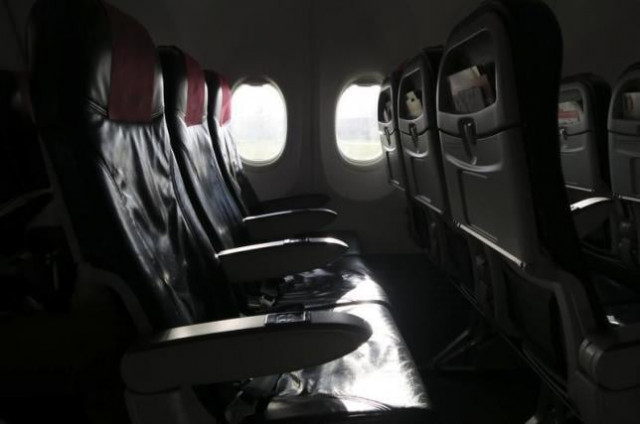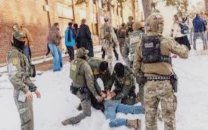What happens if you die on an airplane
Most airlines do not have rules for what to do if a passenger dies on the plane

Passengers seats are seen on board of Norwegian Airways Boening 737-800 at Berlin Schoenefeld Airport. PHOTO: REUTERS
However, Singapore Airlines is one airline that does follow a set of procedures after a person dies on its planes, especially since it operates some of the longest flights.
Families of missing MH370 passengers sue airline as deadline nears
“The deceased will be moved to an empty row of seats and covered in a dignified manner,” a spokesperson for Singapore Airlines told Quartz. “If no seats are available, the body will be left in the deceased’s existing seat. Customers seated next to the deceased will be moved to other available seats wherever this is possible," he added.
An Airbus A340 that Singapore Airlines used to operate for long-haul flights had a special compartment where a dead passenger could be placed and buckled in if no row of empty seats were available, the Guardian reported in 2004.
It came to be known as the “corpse cupboard”—though the airline spokesperson told Bloomberg News three years ago that the compartment had not ever been used for that purpose as the planes were being taken out of service.
MH370 families reject Malaysia’s conclusion on plane debris
An instructor who was filmed training British Airways flight attendants in the BBC documentary, 'A Very British Airline,' said, "You cannot put a dead passenger in the toilet. It’s not respectful and also they are not strapped in for landing,” she adds. “If they slid off the toilet, which could easily happen when you land, they would end up on the floor and they’d have to take the aircraft apart to get that person out.” (Airplane bathroom doors usually fold inwards when opened.) “It’s a very gray subject, isn’t it, because it’s on the day,” says the BA instructor in the documentary.
A death may even go unnoticed by fellow passengers because the stiffness and discoloration after a person dies due to lack of oxygen and a pooling of the blood in the lower part of the body may not be apparent if the person is seated or has a blanket on his or her lap.“They’re only up there for an hour or two and even on a long international flight, it’s not like they’re going to turn into a puddle or something like out of a horror movie,” Doyle said. Paulo Alves, global medical director at MedAire, another medical emergency call center for major airlines, notes that passengers at altitude may be more bloated. “Gas that’s trapped in body cavities can expand, to a rate of 25%,” he says.
Emirates Airline flight from India crash-lands at Dubai airport
A study published in the New England Journal of Medicine in 2013 reviewed 11,900 in-flight emergencies from 2008 to 2010 from five airlines and found that 36 of the cases resulted in the death of a passenger—or 0.3%. Thirty of them died during the flight. The 2013 study found only 7.3% of flights were diverted for a medical emergency.
This means that the case of a medical emergency is about one in every 600 flights. According to the medical director at Stat-MD, a medical communications service for airlines at the University of Pittsburgh Medical Center, TJ Doyle, heart and breathing complications are the most common severe emergencies. There is also no set rule about diverting the flight for a sick passenger. Pilots ultimately decide whether a divert due to a medical emergency, partly based on the guidance of on-the-ground medical advice the crew is applying to the passenger.
This article originally appeared on Quartz.



















COMMENTS
Comments are moderated and generally will be posted if they are on-topic and not abusive.
For more information, please see our Comments FAQ